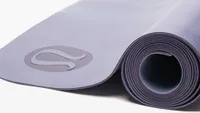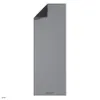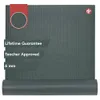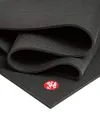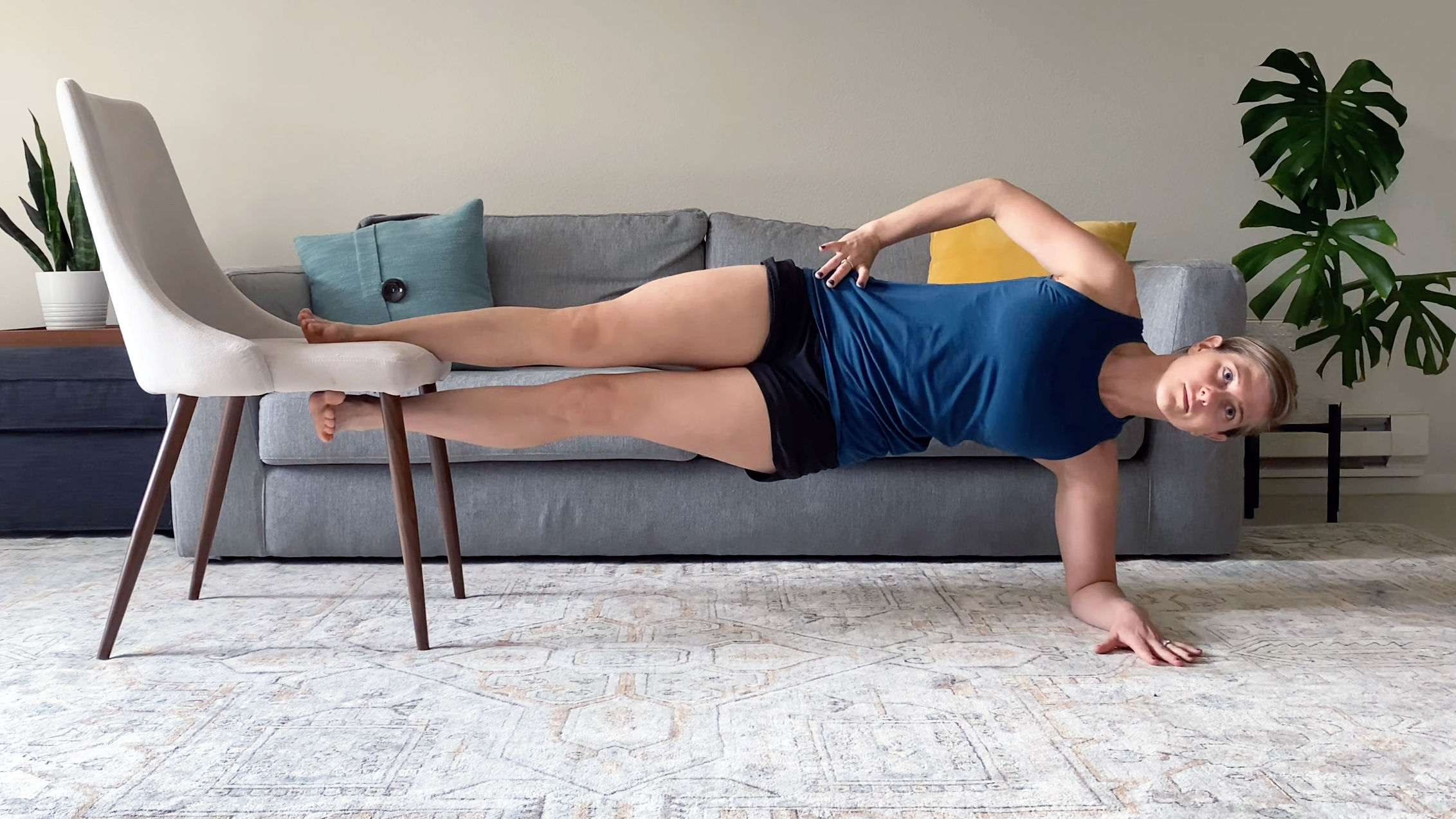
Having seen my colleague go for the two-minute Copenhagen plank challenge last year, I thought I’d try the grounded Copenhagen plank variation to see if I could sweat it out for two minutes a day for one week.
This style of side plank hits your core muscles hard, but also works the inner and outer thighs and the outer glutes. If you want to spice up your side planks, this is the one to try.
I rolled out my favorite grippy Lululemon Take Form mat — one of the best yoga mats, in my opinion — and got to work building up my core stamina with the grounded Copenhagen plank.
What is a grounded Copenhagen plank?
The Copenhagen plank is a side plank where you’ll elevate your legs on a chair or bench, press your inner feet together and hold the position.
The grounded variation of the Copenhagen plank means coming into a side plank on the ground or your yoga mat using a straight or bent arm, then lifting your bottom leg away from the mat, bending the knee and holding it above the ground toward your chest instead.
Resting on one arm or forearm and foot in a stacked position is a great way to engage your core, especially the obliques, the shoulders and upper arms. Lifting your leg engages the inner and outer thighs (the adductors and abductors) and the outer glutes (the gluteus medius).
How to do a grounded Copenhagen plank
- Come onto your mat and into a side plank position on your mat. Stack your shoulders over your wrist or elbow (depending on whether you choose high or low plank)
- Lift your hips and maintain a straight line with your body
- Squeeze your core, then lift your bottom leg away from the mat and bend your knee
- Hold, then release and switch sides.
Here’s what happened when I tried this plank variation every day for a week, performing one minute on each side.
Get instant access to breaking news, the hottest reviews, great deals and helpful tips.
My obliques were on fire
If you find your obliques — the muscles that run down either side of your waist — don’t get as much attention as your abs, then a side plank variation could be a great way to engage them. The best way to engage your obliques is to add lateral and rotational movement to your routines.
During the grounded Copenhagen plank, the obliques work hard to keep you stable, especially with one leg raised away from the ground. Just one minute per side really got these muscles switching on.
My hips, glutes and inner thighs were trembling
The grounded Copenhagen plank is a great bridging exercise between the side plank and the full expression of the Copenhagen plank, but it’s also more accessible as you can do it from the floor or your yoga mat.
That said, there’s no letting up for your lower body. Despite not holding the plank for that long, my hips, outer glutes and inner and outer thighs were on fire. And there’s some research to back it up.
A study by the BMJ found that this type of plank strengthens the hip adductors and outer thighs and could even reduce soreness. Alongside your obliques, these muscle groups support lateral movement like lifting your leg to the side and contribute toward posture and stabilization.
I had to remember to breathe
Static exercises are called isometric exercises. Which is a fancy way of saying, your muscles contract without lengthening or shortening. Typically, it’s a lower-impact exercise that builds muscular stamina, strength and endurance. But it’s worth mentioning your shoulder takes on a lot of weight-bearing during this exercise.
It’s common for people to hold their breath during static exercises, so I had to focus on breathing deeply — a technique called diaphragmatic breath. To do it, I pushed my stomach out like an inflating balloon on my inhale, then drew my belly toward my spine on the exhale. It helped me hold my form and focus on tensing my muscles without holding my breath.
It's an anti-rotational exercise as well
Lifting your bottom leg removes a layer of support from the side plank, and the body naturally begins to rotate, as mine did. I had to focus on keeping my chest forward-facing and drawing my bottom knee upward while squeezing my core and breathing. It's all about balance and anti-rotation.
Don’t let your body twist toward the ceiling or your mat, as mine started to do during those shakier 30 seconds at the end of each attempt. It’s common, but you’ll lose your form, as I learned throughout the week.
Lululemon The Mat @ Lululemon
Lululemon might seem like a spendy activewear and lifestyle brand, but this mat will last you for years to come if you have the initial cash to invest in your mat.
I did a two-minute grounded Copenhagen plank every day for a week — verdict
This full-body exercise beasted me every day, but I did find myself getting more comfortable and balanced across the week. I think this is down to developing the mind-muscle connection, which of course, takes a lot longer than a week, but the practice helped me better understand what to feel where and how to control it.
If you already have experience with exercise, you’ll already have developed some level of mind-muscle connection. Best of all, I could really feel the exercise around my trunk, including my waist, shoulders, hips, glutes and thighs. Thankfully, nothing in my lower back was screaming my name, so I know I’ve been dialing into the correct muscle groups.
The grounded Copenhagen plank also works one side of the body at a time — known as a unilateral exercise. This can be useful for correcting any muscle imbalances in the body, as you’ll often have one stronger side of the body.
Should you try it? Absolutely.
More from Tom's Guide
- I did 12-minute reverse planks every day for a week — here's my results
- Forget planks — this 7-move dumbbell routine sculpts your core and upper body
- Oura Ring 4 — everything we know so far about the next generation smart ring

Sam Hopes is a level 3 qualified trainer, a level 2 Reiki practitioner and fitness editor at Tom's Guide. She is also currently undertaking her Yoga For Athletes training course.
Sam has written for various fitness brands and websites over the years and has experience across brands at Future, such as Live Science, Fit&Well, Coach, and T3.
Having coached at fitness studios like F45 and Virgin Active and personal trained, Sam now primarily teaches outdoor bootcamps, bodyweight, calisthenics and kettlebells.
She also coaches mobility and flexibility classes several times a week and believes that true strength comes from a holistic approach to training your body.
Sam has completed two mixed doubles Hyrox competitions in London and the Netherlands and finished her first doubles attempt in 1:11.

